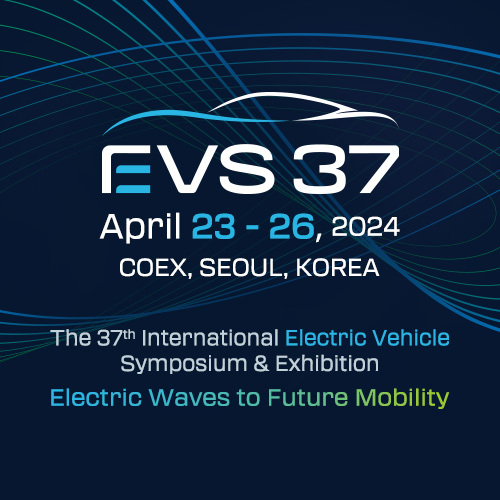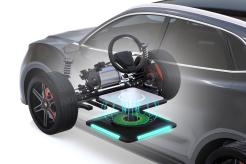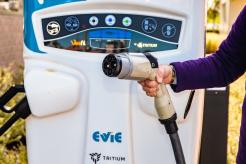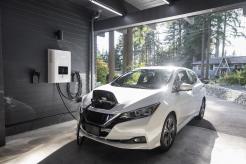Nearly all industries have unique terms and definitions. The electric vehicle (EV) charging industry, thanks to its reliance on so many engineering processes and technologies, may have more than you might expect.
This glossary provides the terms you need to know as a well-versed participant in the EV charging industry.
Vehicle Terms

Electric vehicle (EV): Any vehicle powered by an electric motor. See subtypes (BEV, HEV, PHEV).
Battery electric vehicle (BEV): An electric vehicle that runs solely on battery power. The batteries can be recharged through regenerative braking or plugging into a compatible electrical source (charging station).
Fuel cell electric vehicle (FCEV): An EV that uses hydrogen fuel cells to charge the battery.
Full hybrid electric vehicle (FHEV): An HEV with a large enough electric motor to operate on battery power alone.
Hybrid electric vehicle (HEV): A vehicle powered by an efficient combination of a self-charging electric motor and an internal combustion engine (ICE). The electric motor starts the car, powers it for a short distance, and then switches to the ICE.
Mild hybrid electric vehicle (MHEV): An HEV with a small electric motor that relies primarily on its ICE. An MHEV cannot operate on battery power alone.
Plug-in hybrid electric vehicle (PHEV): An HEV with an electric motor that is recharged by plugging into a compatible electrical source (charging station). PHEV batteries do not recharge through regenerative braking.
Internal combustion engine (ICE): The ICE generates power by compressing gas with a piston and using a spark plug to cause an explosion that pushes the piston outwards. This rotates the crankshaft, which moves the transmission, driveshaft, axles, and wheels.
Battery: Where the EV’s power is stored; the equivalent of an ICE-powered vehicle’s gas tank. EV batteries contain multiple cells and modules that determine their total storage capacity.
Motor: The motor in an EV converts electricity into mechanical power. It does this by running a current through wound copper wire circuits that create a rotating magnetic field. This moves a rotor that drives axle rotation and the EV’s wheels.
Zero-emission vehicle (ZEV): Any vehicle that produces no emissions during operation. A prime example is the BEV.
Electrical Terms
Kilowatt-hours (kWh): A measurement of the power of one kilowatt (1,000 watts) maintained for one hour, used to determine the total power potential of a battery.
Alternating current (AC): The electrical standard used in homes and by the American power grid. It allows long runs of cable with less power loss.
Direct current (DC): The electrical standard used in most electronics and EVs. EVs convert AC power to DC power in the process of charging.
On-board charger (OBC): On-board chargers convert alternating current (AC) to direct current (DC) to charge an EV’s batteries. Level 3 (fast-charging) stations don’t need an OBC since they already provide direct current.
Charging Models, Protocols, and Software
Charge Point Management System (CPMS): Software that manages and optimizes the EV charging process, including operations, payment, driver apps, dynamic load management, EV roaming, and more.
Private charging: Privately owned charging stations not accessible to the public, such as charging units in homes, multi-family properties, and private parking at businesses.

Public charging: Charging stations located in public spaces (dedicated public charging sites, public streets, etc.) and accessible to everyone.
Roaming for EV charging: Allows EV drivers to charge their vehicles on different charging networks using a single recordkeeping and payment account.
Semi-public charging: Privately owned but publicly accessible facilities such as grocery stores, shopping malls, and commercial parking lots.
Infrastructure Terms
Electric vehicle supply equipment (EVSE): Everything needed to charge an EV, including connectors, cables, and charging points. EVSE includes safeguards to avoid overcharging.
Level 1 charging: The charge available from a standard household outlet, including 120V output and between 8 and 20 amps. Level 1 can take up to 24 hours to charge an empty EV battery.
Level 2 charging: Most charge points are Level 2, including 240V output and up to 80 amps. A full charge of an empty battery takes about 4 hours.
Level 3 charging: Also referred to as Fast Charging, these charging points use DC to charge empty batteries in as fast as 30 minutes. Level 3 charging goes up to 900V and over 100 amps. Tesla Superchargers are all Level 3.
Single-phase charging: A connector that draws power through a single cable. Three-phase charging, required for Level 3 charging, draws power through three cables.
Type 1 plug: The most common EV connector in the U.S., charging up to 7kW using a five-pin plug known as an SAE-J1772 or “J plug.”
Type 2 plug: A triple-phase plug charging up to 22kW (home) or 43kW (public).
Combined charging system (CCS): Among the most common EV plugs, a CCS connector charges up to 350kW and includes DC charging pins and a type 1 plug.
CHAdeMO: A four-pin DC connector that charges up to 100 kW.
Open Charge Point Interface (OCPI): Managed by the EVRoaming Foundation, the OCPI allows EV owners to roam between charging networks.
Open Charge Point Protocol (OCPP): The standard charging stations use to communicate with their operators.
Open Smart Charging Protocol (OCSP): The OCSP communicates between charging points and energy management systems to predict capacity.
Off-peak charging: Charging an EV during hours at which the utility charges lower rates (typically overnight).
Charge point operator (CPO): Entities that operate a network of charging points, coordinating with the site owners, managing installation and maintenance, and ensuring operations with utilities go smoothly.
Charge point installer (CPI): Sells and maintains charging points made by multiple manufacturers.
Electric vehicle service provider (EVSP): Manages charging point back-end software and communications.
Electro-mobility Service Provider (eMSP): Provides a large pool of charging points in a specific geographic area for EV drivers, including location directories, driver accounts, payment capabilities, and more.

Mechanical Terms
Torque: The twisting force that rotates a vehicle’s tires. EVs usually have significantly higher torque than ICEVs (internal combustion engine vehicles).
Revolutions per minute (RPM): How many times a shaft turns in a minute. EVs have much higher RPMs than ICEVs.
Range: How far an EV can travel on a single charge. All-electric range (AER) measures how far an EV can travel on its electric charge alone.
Range anxiety: EV driver worries that they don’t have enough battery charge to complete their trip.
Miles per gallon equivalent (MPGe): How far a vehicle can travel with 33.7 kWh, equivalent to the energy in one gallon of gas. This allows comparisons of EV and gas vehicle efficiencies.
Miles per kilowatt-hour (mpkWh): How an EV’s power output translates into real distance traveled, reflecting the role that design and weight play in battery power usage.






